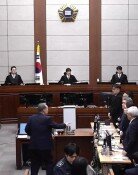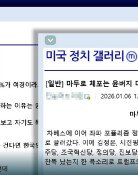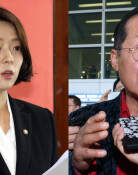North Korea’s firing of ballistic missiles
North Korea’s firing of ballistic missiles
Posted March. 26, 2021 07:45,
Updated March. 26, 2021 07:46
On Thursday morning, North Korea fired two ballistic missiles into the East Sea near Hamju, a county in South Hamgyong Province. The projectiles flew 450 kilometers at an altitude of 60 kilometers. The event marks another bout of provocations from the North following the firing of cruise missiles from four days earlier. The last time Pyongyang blasted a ballistic missile was late March last year. “We express deep concerns about the fact that the firing of missiles came in the middle of the U.S. policy reviews on North Korea,” said an official from the South Korean government during a National Security Council (NSC) Standing Committee.
Unlike the firing of cruise missiles from four days earlier, the latest provocation from Pyongyang directly runs afoul of the UN Resolution on North Korea, prohibiting the firing of any projectile using ballistic missile technologies. Some raised the concern about the possibility that it might have been an SLBM, which can directly pose a threat to the mainland U.S. But Seoul’s response is somewhat lukewarm rather than being careful. While an emergency NSC Standing Committee was convened, it merely ended up expressing “deep concerns,” drawing sharp contrast against Japanese Prime Minister Yoshihide Suga’s strong condemnation on the North’s violation of UN Resolution.
North Korea’s intention is obvious. The communist regime must be aiming at winning concessions such as easing of sanctions by flexing its military muscles before the Biden administration sets up a new North Korea policy. Indeed, Pyongyang is poised to put into action the plan of “March fraught with war and crises” as it had warned, saying, “Making trouble that will keep you awake at night.” There is also a possibility that the communist regime might continue to escalate their provocations until April 15, the birthday of the North’s founding father Kim Il Sung. Another factor at work should be its confidence about China’s backing, stemming from their latest exchange of verbal messages between Beijing and Pyongyang.
But their typical provocations against the Biden administration will only backfire. Former U.S. President Donald Trump used to shrug off North Korea’s missiles-firing as “short-range,” and Seoul’s responses were also lukewarm. By contrast, Biden refuses to separate the North’s threats into short and long ranges or Seoul and Washington. The Joint Communique of the 2+2 ministerial meeting (diplomatic and defense ministers) stresses a “complete implementation of UN Resolution.” The Biden administration has made clear that it will consider all types of ballistic missiles as violation of UN Resolution regardless of their ranges.
Seoul and Washington must resolutely handle North Korea’s provocations as both allies and members of international community. While it is also important to bring them to a negotiation table for denuclearization, Seoul must first address Pyongyang’s vicious patterns of committing wrongdoings for compensation and trying to drive a wedge between South Korean and the U.S. That would be the only way for Seoul to restore mutual trust with Washington and rebuild the sanctions regime against Pyongyang.



![[속보]윤석열 사형 구형…내란특검 “전두환보다 엄정히 단죄해야”](https://dimg.donga.com/c/138/175/90/1/wps/NEWS/IMAGE/2026/01/13/133151283.1.jpg)



